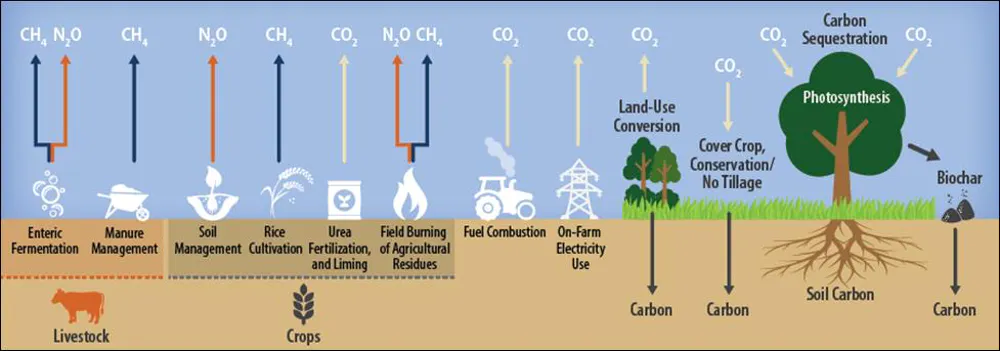Rice and beef go together in all kinds of dishes, and for many in the world, these two (rice especially) are staples in the diet.
But they are major impactors in climate change
According to Xiaoming Xu and Atul Jain of the University of Illinois at Champaign-Urbana, the two are major contributors to greenhouse gas emissions. In all, they say, farm production accounts for about 35 percent of greenhouse gas emissions.
Obviously people have to eat
While it’s imperative to feed the world’s burgeoning populations, we may need to make critical decisions about what to grow and what to eat. And these researchers help guide us toward such decisions, I think.
Their research breaks down the contributors
Production of animal-based foods – meat, poultry and dairy products, including growing crops to feed livestock and pastures for grazing – contributes 57 percent of emissions linked to the food system. Raising plant-based foods for human consumption contributes 29 percent. The other 14 percent of agricultural emissions come from products not used as food or feed. This would be things such as cotton and rubber, according to the researchers.
So, just looking at those numbers
So the numbers suggest it’s best to move to a more plant-based diet as an option for curbing greenhouse gas emissions and climate change.
But the rice question?
Rice is the largest contributor among plant-based foods, producing 12 percent of the total greenhouse gas emissions from the food sector, followed by wheat (5 percent) and sugarcane (2 percent). Rice stands out because it can grow in water, so many farmers flood their fields to kill weeds, creating ideal conditions for certain bacteria that emit methane.
This helps to explain why South and Southeast Asia have the greatest food-production-related emissions by region, producing 23 percent of the global total, according to Xu and Jain. This region is the only place where plant-based emissions are larger than animal-based emissions. South America is the second-largest emitter at 20 percent, and has the largest emissions from animal-based food, reflecting the dominance of ranching there.
How do they know?
The researchers developed a comprehensive framework that combines modeling and various databases. It enabled them to estimate average yearly global emissions of the greenhouse gases carbon dioxide, methane and nitrous oxide from the production and consumption of plant- and animal-based human food. Currently, the study covers the years 2007-2013.
Use of land
Their framework also shows that raising animal-based foods consumes six times as much land as producing plant-based foods.
Worldwide, they estimate that humans are using 18 million square miles of land to produce food – about 31 percent of Earth’s total land area, excluding areas covered by snow and ice. Of this, 30 percent is cropland and 70 percent is for grazing.
Useful for land management
The research speaks volumes to those who manage land and are worried about climate change. As the earth warms, it is harder to raise crops in some places. We need to do what we can to keep people fed and the earth healthy.
The Conversation
I obtained the above information by following a link in The Conversation, a daily newsletter I receive with lots of valuable researched insight into the problems confronting us. I recommend that you subscribe as well.

